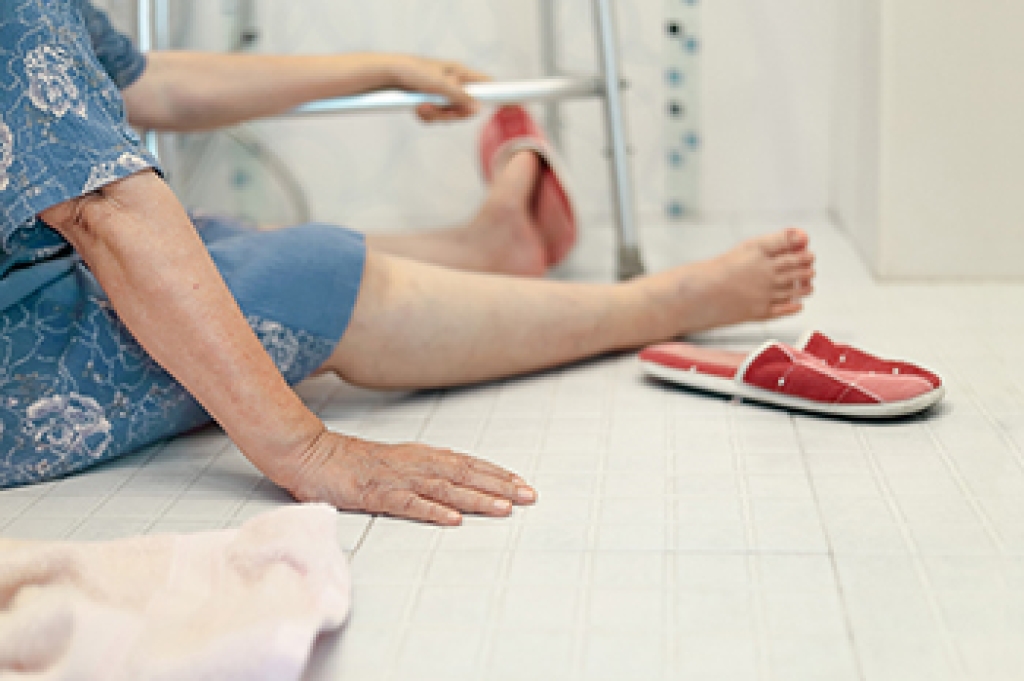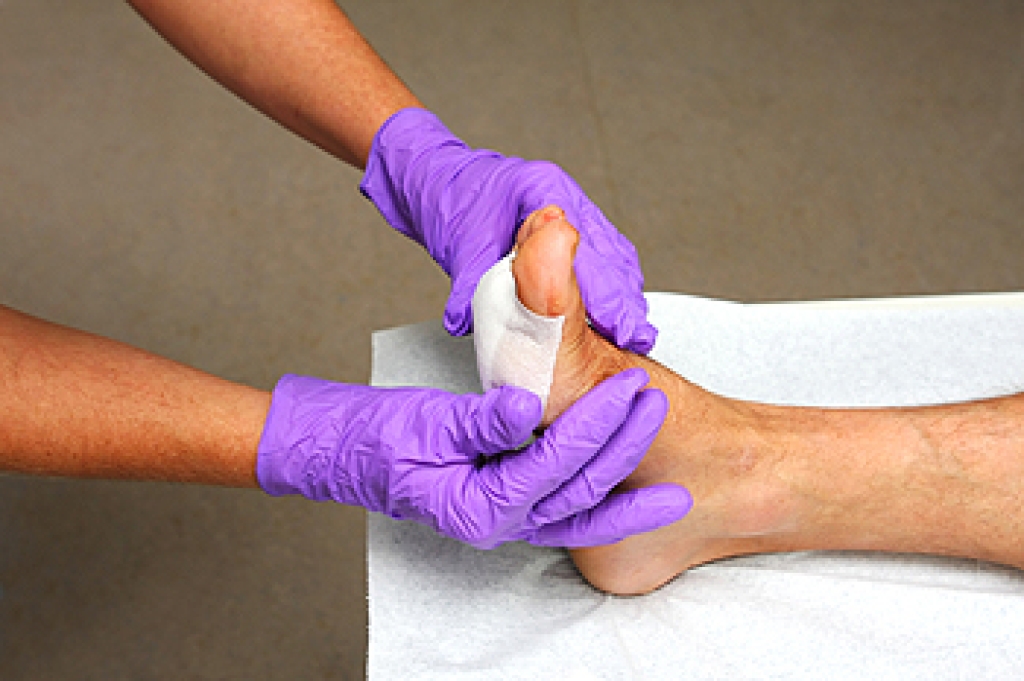Connect With Us
Blog
Blog
Common Foot Injuries in Soccer Players

Soccer players often face foot injuries due to constant running, kicking, and quick direction changes. Blisters can form from friction and cause painful skin irritation. Toenail injuries may occur from repeated impact with the ball or ill fitting cleats, leading to bruising or loss of the nail. Turf toe results from the big toe bending too far, causing joint pain and swelling. Additionally, plantar fasciitis develops when the band of tissue along the bottom of the foot becomes inflamed, creating sharp heel pain. Prevention includes wearing proper cleats, keeping feet dry, and stretching regularly. A podiatrist can diagnose and treat these injuries while offering strategies to avoid re-injury. If you have developed a foot or ankle injury while playing soccer, it is suggested that you schedule an appointment with a podiatrist who can offer effective relief and treatment solutions.
Sports related foot and ankle injuries require proper treatment before players can go back to their regular routines. For more information, contact one of our podiatrists of Mt Rose Foot & Ankle Specialists. Our doctors can provide the care you need to keep you pain-free and on your feet.
Sports Related Foot and Ankle Injuries
Foot and ankle injuries are a common occurrence when it comes to athletes of any sport. While many athletes dismiss the initial aches and pains, the truth is that ignoring potential foot and ankle injuries can lead to serious problems. As athletes continue to place pressure and strain the area further, a mild injury can turn into something as serious as a rupture and may lead to a permanent disability. There are many factors that contribute to sports related foot and ankle injuries, which include failure to warm up properly, not providing support or wearing bad footwear. Common injuries and conditions athletes face, including:
- Plantar Fasciitis
- Achilles Tendinitis
- Achilles Tendon Rupture
- Ankle Sprains
Sports related injuries are commonly treated using the RICE method. This includes rest, applying ice to the injured area, compression and elevating the ankle. More serious sprains and injuries may require surgery, which could include arthroscopic and reconstructive surgery. Rehabilitation and therapy may also be required in order to get any recovering athlete to become fully functional again. Any unusual aches and pains an athlete sustains must be evaluated by a licensed, reputable medical professional.
If you have any questions please contact our office located in Reno, NV . We offer the newest diagnostic and treatment technologies for all your foot and ankle needs.
Common Foot Problems

Many people experience common foot problems that can affect daily comfort and mobility. Athlete’s foot is a fungal infection causing itching, redness, and peeling, often treated with antifungal creams and keeping feet dry. Blisters result from friction or pressure, relieved by padding, protective footwear, and proper hygiene. Bunions are bony bumps at the base of the big toe caused by genetics or tight shoes, eased with orthotics, wider shoes, and sometimes surgery. Corns develop from repeated pressure and friction, relieved with cushioning, wearing proper footwear, and professional removal. A podiatrist can diagnose these conditions, provide targeted treatments, recommend footwear, and offer preventive strategies to protect foot health. If you have any type of foot or ankle pain, it is suggested that you consult a podiatrist who can offer effective treatment solutions.
Foot Pain
Foot pain can be extremely painful and debilitating. If you have a foot pain, consult with one of our podiatrists from Mt Rose Foot & Ankle Specialists. Our doctors will assess your condition and provide you with quality foot and ankle treatment.
Causes
Foot pain is a very broad condition that could be caused by one or more ailments. The most common include:
- Bunions
- Hammertoes
- Plantar Fasciitis
- Bone Spurs
- Corns
- Tarsal Tunnel Syndrome
- Ingrown Toenails
- Arthritis (such as Gout, Rheumatoid, and Osteoarthritis)
- Flat Feet
- Injury (from stress fractures, broken toe, foot, ankle, Achilles tendon ruptures, and sprains)
- And more
Diagnosis
To figure out the cause of foot pain, podiatrists utilize several different methods. This can range from simple visual inspections and sensation tests to X-rays and MRI scans. Prior medical history, family medical history, and any recent physical traumatic events will all be taken into consideration for a proper diagnosis.
Treatment
Treatment depends upon the cause of the foot pain. Whether it is resting, staying off the foot, or having surgery; podiatrists have a number of treatment options available for foot pain.
If you have any questions, please feel free to contact our office located in Reno, NV . We offer the newest diagnostic and treatment technologies for all your foot care needs.
How Foot Function Affects Pain and Balance in Older Adults

As people age, even small changes in foot function can influence how they walk, stand, and maintain balance. Reduced flexibility, muscle weakness, or loss of sensation in the feet can make it harder to adjust to uneven surfaces, often leading to discomfort or instability. Chronic foot pain, whether from arthritis, deformities, or circulation issues, can cause people to alter their gait, which further increases the risk of falls. Wearing supportive footwear and targeted foot-strengthening exercises can improve stability and reduce pressure on painful joints. Podiatrists play an important role in assessing balance, identifying biomechanical problems, and recommending custom orthotics or footwear designed to restore comfort and mobility. If foot pain or unsteadiness is affecting your daily confidence, it is suggested that you visit a podiatrist for personalized evaluation and fall-prevention strategies.
Preventing falls among the elderly is very important. If you are older and have fallen or fear that you are prone to falling, consult with one of our podiatrists from Mt Rose Foot & Ankle Specialists. Our doctors will assess your condition and provide you with quality advice and care.
Every 11 seconds, an elderly American is being treated in an emergency room for a fall related injury. Falls are the leading cause of head and hip injuries for those 65 and older. Due to decreases in strength, balance, senses, and lack of awareness, elderly persons are very susceptible to falling. Thankfully, there are a number of things older persons can do to prevent falls.
How to Prevent Falls
Some effective methods that older persons can do to prevent falls include:
- Enrolling in strength and balance exercise program to increase balance and strength
- Periodically having your sight and hearing checked
- Discuss any medications you have with a doctor to see if it increases the risk of falling
- Clearing the house of falling hazards and installing devices like grab bars and railings
- Utilizing a walker or cane
- Wearing shoes that provide good support and cushioning
- Talking to family members about falling and increasing awareness
Falling can be a traumatic and embarrassing experience for elderly persons; this can make them less willing to leave the house, and less willing to talk to someone about their fears of falling. Doing such things, however, will increase the likelihood of tripping or losing one’s balance. Knowing the causes of falling and how to prevent them is the best way to mitigate the risk of serious injury.
If you have any questions, please feel free to contact our office located in Reno, NV . We offer the newest diagnostic and treatment technologies for all your foot care needs.
Healing Difficult Foot Sores in Aging Feet

With age, feet lose protective padding, circulation weakens, and skin becomes fragile, making older adults more likely to develop foot wounds that linger. Even a small blister, scrape, or callus can evolve into a stubborn sore when blood flow or sensation is reduced. Chronic wounds may be painful or slow to close, and infection can spread quickly, if not addressed early. These sores often signal underlying conditions such as diabetes, vein disease, or poor mobility. Treatment focuses on restoring circulation, protecting the area from pressure, and keeping the wound clean and moist to support healing. A podiatrist may use advanced dressings, gentle debridement, or custom orthotics to relieve pressure and prevent recurrence. Early attention is vital to preserve comfort and mobility. If you have a foot wound that has not improved within a couple of weeks, it is suggested that you visit a podiatrist for a professional assessment and care.
Proper foot care is something many older adults forget to consider. If you have any concerns about your feet and ankles, contact one of our podiatrists from Mt Rose Foot & Ankle Specialists. Our doctors can provide the care you need to keep you pain-free and on your feet.
The Elderly and Their Feet
As we age we start to notice many changes in our body, but the elder population may not notice them right away. Medical conditions may prevent the elderly to take notice of their foot health right away. Poor vision is a lead contributor to not taking action for the elderly.
Common Conditions
- Neuropathy – can reduce feeling in the feet and can hide many life-threatening medical conditions.
- Reduced flexibility – prevents the ability of proper toenail trimming, and foot cleaning. If left untreated, it may lead to further medical issues.
- Foot sores – amongst the older population can be serious before they are discovered. Some of the problematic conditions they may face are:
- Gouging toenails affecting nearby toe
- Shoes that don’t fit properly
- Pressure sores
- Loss of circulation in legs & feet
- Edema & swelling of feet and ankles
Susceptible Infections
Diabetes and poor circulation can cause general loss of sensitivity over the years, turning a simple cut into a serious issue.
If you have any questions, please feel free to contact our office located in Reno, NV . We offer the newest diagnostic and treatment technologies for all your foot care needs.
Blog Archives
- 2025
- 2024
- 2023
- 2022

